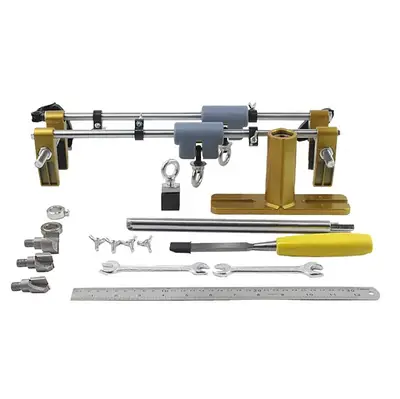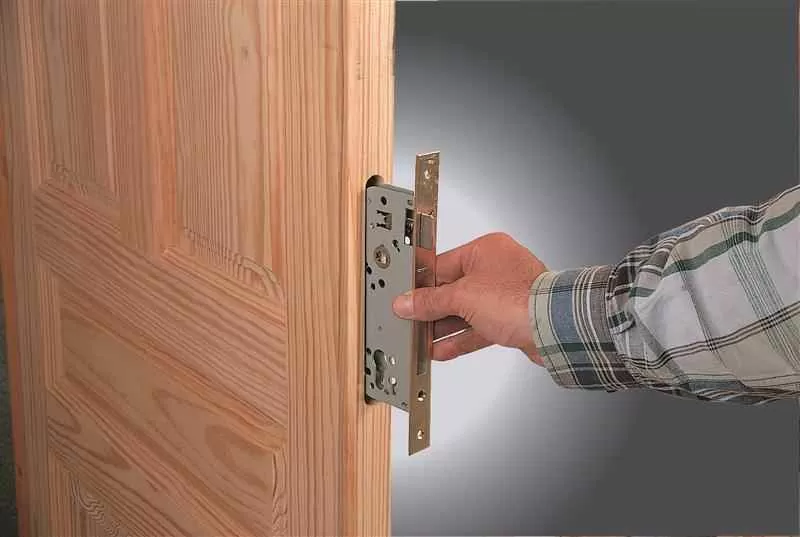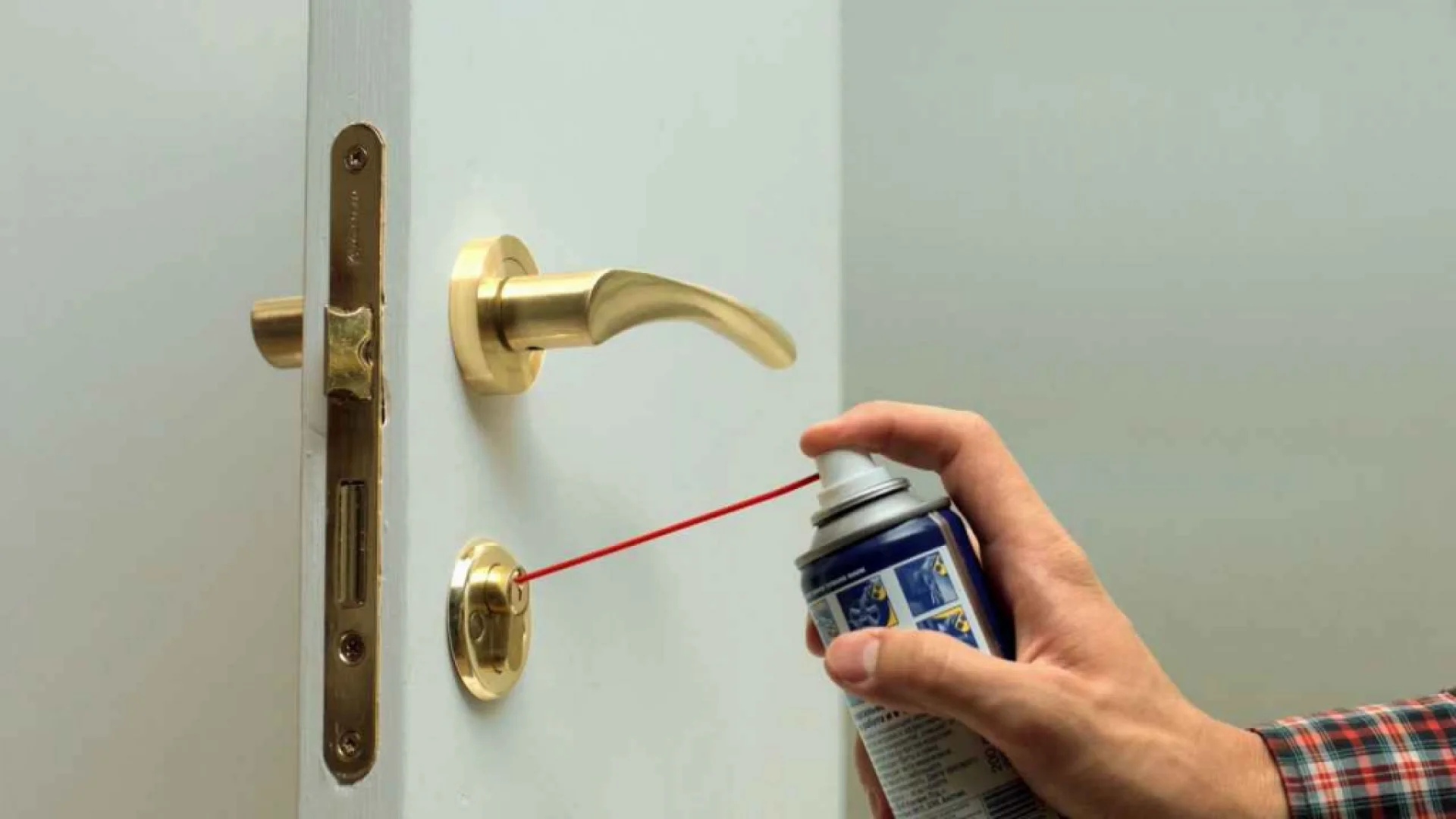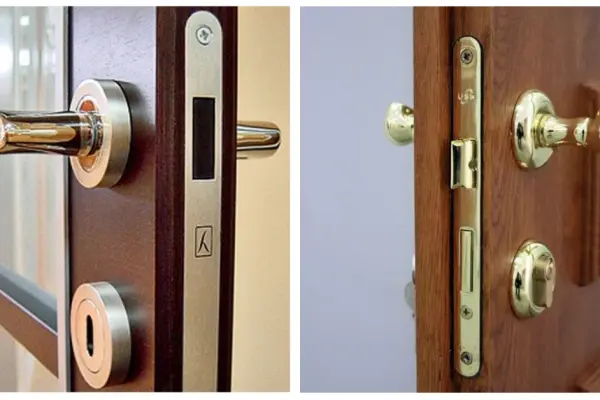Installing locks in interior doors in 2025 costs from 400 to 800 UAH (worldwide $15-30) for the craftsman's work. Interior door lock installation requires the right approach and compliance with DIN 18251 standard. Is it worth saving on professional services? Choosing interior door locks depends on the type of door panel, frequency of use and budget – from 200 to 1200 UAH (worldwide prices $8-45) for standard models.
The modern market offers various solutions for interior door hardware. Interior door lock installation can be performed independently, saving on craftsman services. In practice working with private clients, mortise models are most often chosen due to their aesthetics and functionality. By the way, the correct approach to mortising resembles assembling a clockwork mechanism – each part has its place.
According to data from the American company This Old House, 73% of homeowners make critical mistakes when installing locks independently, leading to premature mechanism wear after just 2-3 years instead of the standard 15-20 years.
How to choose a lock for interior doors: types and characteristics
 Interior door locks are divided into several categories. The most common options today:
Interior door locks are divided into several categories. The most common options today:
Interior lock mechanisms can be different. Interior door lock with handle is a popular solution for residential premises. Taking into account the design features of the door panel, mortise interior door locks require precise marking according to EN 12209 standard. At one of last season's projects, we had to redo the installation due to marking inaccuracy of just 2 mm – a critical error for the standard center-to-center size of 72 mm.
| Lock Type | Advantages | Disadvantages | Price in Ukraine (worldwide prices) |
|---|---|---|---|
| Interior latch lock | Easy installation, low price | Minimal security, function class F | 200-350 UAH ($8-14) |
| Interior cylinder lock | Possibility of core replacement, class C | More complex installation | 400-800 UAH ($15-30) |
| Magnetic interior door lock | Silent operation, durability DIN 18251 | High cost | 800-1500 UAH ($30-58) |
| Cylindrical interior lock | Versatility, reliability | Requires precise installation | 350-700 UAH ($13-27) |
Magnetic locks are becoming increasingly popular. Not by chance. Technologies borrowed from the aerospace industry guarantee reliability and durability.
Where to buy interior door locks: recommended brands
In the Ukrainian market, brands APECS (400-600 UAH / $15-23), KALE (500-800 UAH / $19-30), Hafele (900-1800 UAH / $35-70) have proven themselves. Chinese analogs cost 150-400 UAH ($6-15), but their service life is 2-3 times shorter. Therefore, savings may be illusory.
Tools for DIY lock mortising
 Preparing the right tools for lock mortising determines 80% of the project's success. Why is this so important? Professional craftsmen use a proven set:
Preparing the right tools for lock mortising determines 80% of the project's success. Why is this so important? Professional craftsmen use a proven set:
- Lock mortising router or sharp chisel 12-16 mm wide
- Drill with hole saws: 22 mm (for DIN cylinder), 25-32 mm (for lock body)
- 16 mm spade bit for bolts and connecting holes
- Measuring tape with lock and carpenter's pencil
- Screwdriver or drill with bit set
- 50 cm metal ruler for precise marking
Quality tools not only simplify the work but also guarantee precision. It's impossible to achieve professional results with makeshift tools.
A lock mortising router significantly simplifies the process and ensures perfectly straight hole edges. This Old House experts confirm that using professional tools reduces work time by 60% and decreases the risk of door panel damage. In one recent project, using a quality router cut work time in half. Therefore, the right tool choice saves both time and effort.
Safety when working with tools
Safety glasses are mandatory. When mortising locks, also use gloves. Consider that wood shavings can get in your eyes, and sharp metal edges can injure hands, especially when working with hardwood species.
Interesting fact: Avigilon research showed that electromagnetic locks have a holding force of up to 1200 pounds (544 kg), which is 15 times stronger than a standard mortise lock. However, for interior doors such power is excessive – 50-100 pounds is sufficient.
DIY lock mortising: step-by-step instructions
 Interior door lock installation begins with marking. Precision here is critical. Lock marking is performed at a height of 1 meter from the floor.
Interior door lock installation begins with marking. Precision here is critical. Lock marking is performed at a height of 1 meter from the floor.
Stage 1: Door panel preparation (15-20 min)
Door panel preparation includes cleaning from dust and dirt. It's important to check wood moisture – for interior doors up to 15-18% is acceptable according to EN 14351-1 standard. At higher levels, deformation is possible, which will complicate further installation and lock operation.
Stage 2: Installation location marking (10-15 min)
Precise marking is the key to successful installation. Standard distances from door edge according to DIN 18251: 38 mm, 45 mm or 50 mm to lock center. Center-to-center distance between handle and cylinder – 72 mm (standard) or 85/90 mm for special locks. Consider that incorrect marking can lead to panel damage. In practice working with private clients, I see how a 2-millimeter error forces starting over.
Stage 3: Door frame preparation (10-15 min)
Geometry is the foundation of reliability. Before mortising the lock, check the door frame geometry. The gap between door panel and frame should be 2-3 mm according to EN 12051 – no more, no less. Mark the strike plate installation location on the frame considering paint or varnish thickness.
Stage 4: Drilling holes (15-25 min)
Patience is your best helper. For the cylinder, use a 22 mm diameter hole saw (DIN standard), for the lock body – 25-32 mm depending on the model. Hole depth should match the body size plus 2-3 mm reserve. Don't rush – accuracy here is more important than speed, as damaged door panels are nearly impossible to restore.
Real story: In 2023, Oleg from Kyiv independently installed a magnetic lock worth 600 UAH. Having prepared with video instructions and spending 2 hours of work, he saved 500 UAH on craftsman services. The lock has been working silently for over a year, confirming the correctness of choosing quality hardware and thorough preparation for installation.
Stage 5: Lock and hardware installation (20-30 min)
The final stretch. Interior door lock installation concludes with mounting the lock face plate and strike plate on the frame. Check the smooth operation of all moving parts – the lock should work without effort according to EN 12209 standard.
Working with different materials
Each material has its character. Solid wood requires pre-drilling holes 3-4 mm in diameter. MDF is prone to delamination – use sharp drills and speed no more than 500 rpm. Veneered doors require special care to preserve the coating. It's known that the wrong approach can ruin expensive door hardware forever.
Adjustment after cylindrical interior lock installation
.jpg) Interior door handles are installed together with the lock or separately. In practice, I often notice that complete interior door hardware works better due to the coordination of all elements. Glass doors require a special approach.
Interior door handles are installed together with the lock or separately. In practice, I often notice that complete interior door hardware works better due to the coordination of all elements. Glass doors require a special approach.
Interior door hinges also affect the choice of lock type. The design features of each material should be considered. Proper adjustment is half the success.
Lock adjustment after installation
Fine tuning is critically important. After installation, precise adjustment according to ISO 12209 may be required. The latch should enter the strike plate to a depth of 8-12 mm for interior doors – no less. If necessary, adjust the plate position or file the latch with a special metal file.
Common problems and their solutions
Even with proper installation, problems may arise. What to do in such cases? Here are the most common situations and ways to solve them:
Lock sticks or turns hard
The cause is always the same – insufficient lubrication or mechanism misalignment. Solution: lubricate moving parts with graphite pencil or special lubricant. Helps in 95% of cases.
Door doesn't close completely
The most common beginner problem. Cause: incorrect strike plate positioning. Solution: check hole and latch alignment, adjust the plate with millimeter precision.
Handle or latch play
Sign of wear or poor installation. Cause: loose fastening. Solution: tighten mounting screws, replace worn parts with originals from the manufacturer if necessary.
Common mistakes when mortising locks
 Analysis of hundreds of DIY installation cases shows patterns. Most problems can be anticipated and avoided. Why do some manage independently while others have to call lock mortising craftsmen? Here are the top 5 critical mistakes:
Analysis of hundreds of DIY installation cases shows patterns. Most problems can be anticipated and avoided. Why do some manage independently while others have to call lock mortising craftsmen? Here are the top 5 critical mistakes:
- Inaccurate positioning markup – deviation even by 1-2 mm from DIN standard complicates installation
- Too deep hole drilling, which weakens the door structure
- Using poor quality low-carbon steel fasteners instead of stainless steel
- Ignoring EN 12209 standards regarding gaps and tolerances
- Attempting to speed up the process by skipping preparation stages
Each of these mistakes can lead to disaster. The need for complete door panel replacement costs significantly more than the initial savings on craftsman services.
How to properly mortise interior door locks? The main thing is not to rush and follow the technology. Professional approach always beats speed.
Professional advice: experienced craftsmen recommend starting drilling at 300-400 revolutions per minute, gradually increasing to 800-1000. This technique prevents wood chips and ensures a perfectly clean cut even in hardwood species.
Lock maintenance and operation
 Proper care extends lock service life up to 20 years. Why do some locks serve for decades while others break after a year? Every six months, clean the mechanism from dust and lubricate moving parts with special lubricant.
Proper care extends lock service life up to 20 years. Why do some locks serve for decades while others break after a year? Every six months, clean the mechanism from dust and lubricate moving parts with special lubricant.
Magnetic models require minimal maintenance. It's known that their operating resource according to EN 1634 tests is over 200,000 opening-closing cycles for household use. Not much. But enough for decades of operation.
Scheduled maintenance
Every 6 months, check fastening condition. Clean dust from the mechanism and lubricate door hinges. This prevents premature wear of all hardware and saves money on repairs.
Avigilon experts established: magnetic locks consume only 0.5 W of energy in standby mode versus 15-20 W for electromechanical analogs, making them the most eco-friendly choice for modern "smart" homes.
Economic feasibility of DIY installation
Independent lock installation is theoretically possible for most home craftsmen. However, all risks should be weighed. In case of error, at best you'll have to call a craftsman for correction, which doubles expenses. At worst – buy a new door panel, since damaged wood is rarely possible to restore aesthetically.
Doors after unsuccessful modifications often look unpresentable. Clumsily patched holes, uneven edges, tool scratches – all this spoils the overall interior appearance. Therefore, before starting work, honestly assess your skills and readiness for possible consequences.
Economic calculation: is it worth ordering lock installation
Expense comparison gives a clear picture. Interior lock price varies from 200 to 1200 UAH (worldwide $8-45). Lock installation services cost additionally 400-800 UAH ($15-30 in worldwide prices). With independent installation, savings amount to 25-40% of total expenses. But is savings always justified?
Tool investment payback time
The calculation is simple. If you need to install 3-4 locks, purchasing a basic tool set (800-1200 UAH / $30-45) will pay for itself completely. Is it worth buying more expensive interior door locks? Quality investments pay off with durability and reliable operation. Cheap interior locks may prove expensive in the long term.

